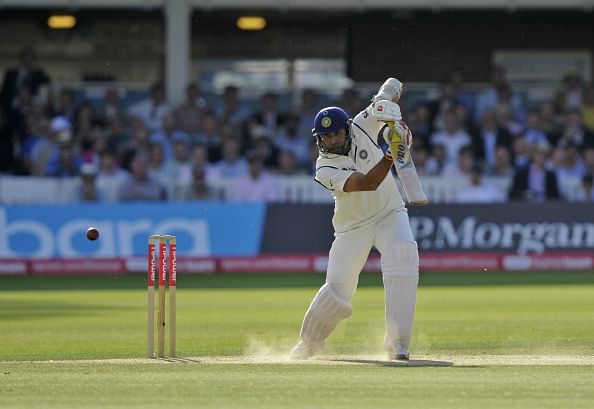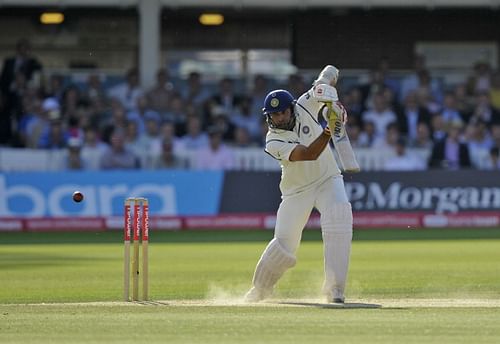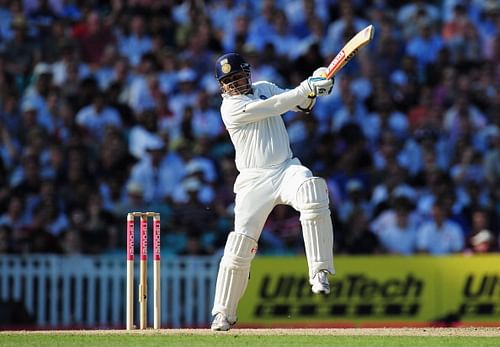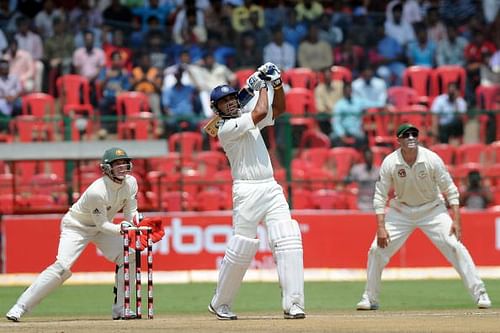
Similar setup, dissimilar execution - A study of Sehwag, Laxman and Vijay
A couple of taps of the bat as the bowler starts running in. Optimum backlift, negligible trigger motion, minimal feet movement and bang! No exaggerated follow through or flourish. Rarely did this series of events skip VVS Laxman’s batting regime and rarely did his knocks lack élan and flair. Laxman’s legacy is unparalleled and we often walk down that rich memory lane; more often it is the reverberating effect of his batting that clings onto our mind. This piece tries to look through that mechanism.

VVS Laxman
What worked for Laxman so well – those waxy wrists? His height? His hand-eye co-ordination? Probably a bit of all. But what stands out in his batting is the timing. Often players with the gift of precise timing are attributed with postures straight out of the coaching manuals, but with Laxman rarely did you find the one-knee-bent cover drives or quick-feet-using-depth-of-the-crease cross batted shots. Thus those wrists and prominent back-foot play were principally based on the ability to trigger the bat in sync with what his eyes saw off the bowler’s hand.
In recent history (of Indian cricket) we have had two Test openers who resemble a similar working principle – Virender Sehwag and Murali Vijay. The thought of having Sehwag and Laxman in the same bracket for any parameter itself is outrageous; the intention here is only to study the initial progress of the respective systems. In all the three cases, the knees aren’t bent too much while taking stance, the transfer of weight is not obvious visually, the favoured scoring options happen to be back-foot oriented and on-the-rise drives. Though each of the three exudes a distinct mood among on-lookers, none of the three makes for boring/cumbersome viewing whenever they bat for a longer duration.

Virender Sehwag
Time is one another facet that knits the three in one bracket. Television replays show the amount of time such batsmen have and clearly that is an advantage over predominant front-foot batsmen, especially on tracks that have true bounce and carry. A superficial observation would suggest that along with flair comes inconsistency or lack of sustenance of momentum, associated with certain other rhythm players. A match-winning/impact knock isn’t necessarily followed by a couple of similar innings for quite some time. The likes of Sehwag, Vijay and Laxman make batting look easy, lovely and enviable, at the cost of sharp peaked contour plots rather than long plateau ones.
A possible reason could be the lack of modifications such players need, courtesy the abundance of natural talent and freedom to flaunt that. In a way their range of striking areas/shots are bounded, which is not a bad thing to possess, for that reduces the possibilities of prospective chinks that might crop up. It also eases the process of finding faults in case of a poor run of form. Laxman’s batting didn’t change much over the years, neither did Sehwag’s. If analysed from this perspective, you could probably find that the 4 year cycle of either batsman doesn’t change much (excluding the age factor) over the span of respective careers, in comparison to say a Tendulkar or a Dravid. Vijay has started off on a similar trend – a couple of delightful long knocks followed by some irritating patchy form. Laxman and Sehwag didn’t do too badly by not falling to the pressure of maintaining consistency by altering their style of play; these illustrations might provide a guideline for Vijay – don’t tinker too much unless your game allows that.

Murali Vijay
Greater the expectations, greater is the magnitude of scrutiny. The microscope will always find you if you happen to be a Sehwag or a Laxman, but somehow an inconsistent opener is a greater problem than an inconsistent number 5/6. This might prompt the possibility of Sehwag in the middle-order for the final couple of laps in international cricket. Players whose technique is based on hand-eye coordination will always find the moving ball a bit of a struggle but will enjoy bounce and back-foot play. Vijay is shaping up beautifully but he needs to guard against these weaknesses if he intends to have a long Test career. Laxman illustrated that if you have a good defensive technique, you can manoeuvre your strengths to smudge your shortcomings. Sehwag has exemplified that positive attitude coupled with power can allow you to manipulate your weaknesses. Isn’t this fascinating that players with similar basic working methodologies can have so distinct career profiles?